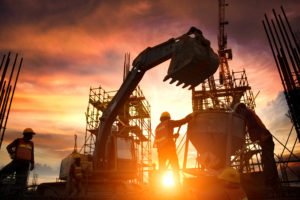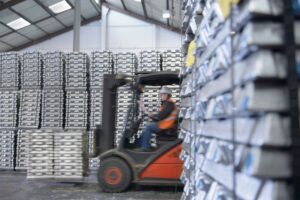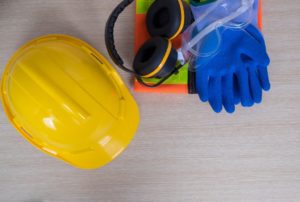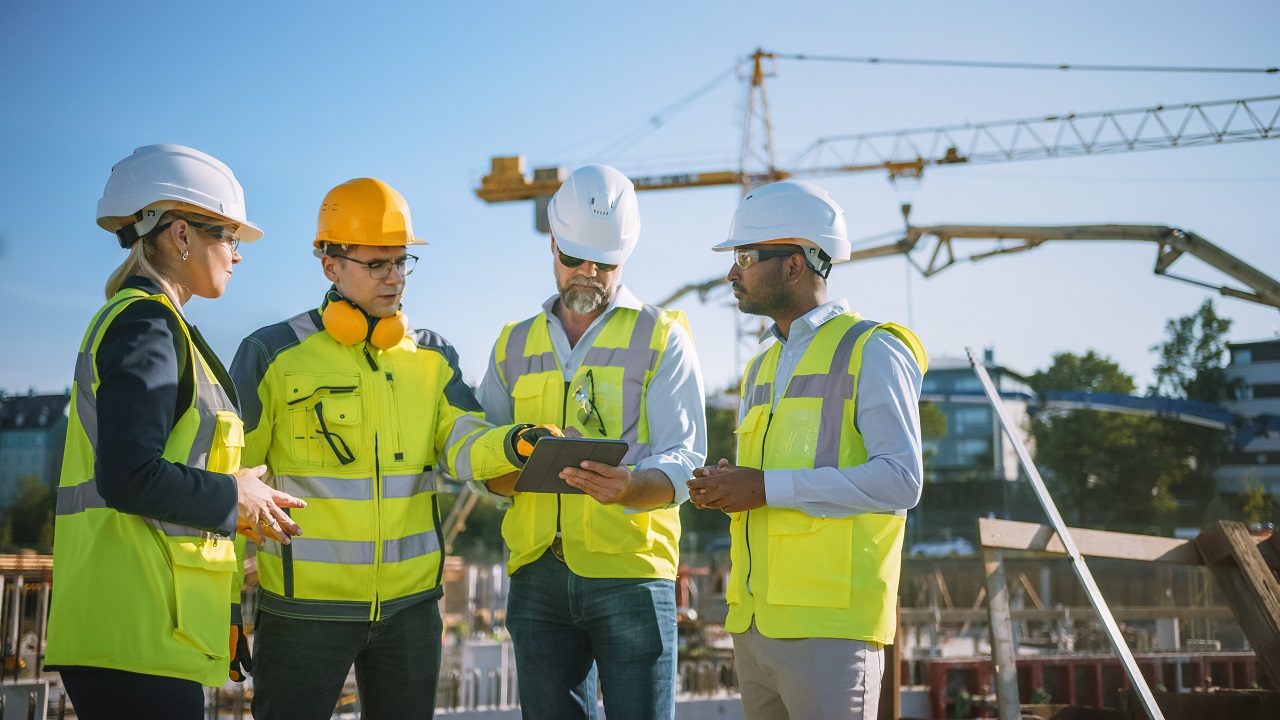 The sheer amount of injuries, illnesses and long-term health issues that can affect employees are massive, and they are all made inherently more likely if managers are negligent when implementing proper safety measures. It’s widely believed that the construction industry is the UK’s deadliest, according to Building Magazine, with 30 deaths in 2021/22.
The sheer amount of injuries, illnesses and long-term health issues that can affect employees are massive, and they are all made inherently more likely if managers are negligent when implementing proper safety measures. It’s widely believed that the construction industry is the UK’s deadliest, according to Building Magazine, with 30 deaths in 2021/22.
When considering the HSE (Health and Safety Executive) guidance on construction worker safety – which is an effective starting point when assessing the risk of your sites – it’s also important to note that the volume and severity of risks will vary from site to site. Some sites will involve contractors working at height, while others will involve a broader use of machinery or equipment, each of which presents its share of unique risks.
Therefore, it’s difficult to summarise exactly how many risks will be present, but as a loose guide, consider the below advice to help you ensure optimum health and safety for your workers.
Common hazards and risks on building sites
The construction industry comprised 25% of fatal worker injuries in 2022 alone, suggesting a serious injury rate of 1.63 per 100,000 workers, almost double that of other sectors like transport and manufacturing.
 The average construction site presents a plethora of risks for employees and contractors, including:
The average construction site presents a plethora of risks for employees and contractors, including:
- Falls from height
- Exposure to harmful chemicals or substances
- Slips and trips
- Machinery accidents or malfunctions
- Vehicle accidents
- Burns or scalds caused by fires
- Tool malfunctions
- Electrocution
- Falling or flying objects
- Structural collapses
As a construction site manager, it can be tempting to cut corners to preserve valuable budgets, but workplace injuries cannot be overlooked. You cannot put a price on personal safety and welfare. It’s in your best interests to make construction site safety a priority.
7 construction site safety rules
As your construction business grows and can accommodate more customer project requests, perhaps due to optimized marketing activity, you’ll need to ensure that you have sufficient people power on hand to complete jobs by the required deadlines. As the customer base grows, usually, so does the project size.
However, even if you still opt for subcontracting certain construction jobs out, that doesn’t mean you should allow site safety to take a backseat.
You can contribute to promoting a healthier and safer construction site by implementing a few basic safety rules that your team must abide by. Taking these tips on board will help to minimize hazards and risks, and avoid injuries, accidents and health problems, all while posing no risk to the structural integrity of your building.
 Provide clear instructions and signage. Every contractor or employee should undergo a site induction, ensuring that they are familiar with the layout, operations, and current risks. All safety rules and procedures should be explained during the induction process, with all personnel indicating that they have read and understood the signs and risk control measures. Safety signs should be appropriately placed around the site, to promote safety awareness for all employees and visitors.
Provide clear instructions and signage. Every contractor or employee should undergo a site induction, ensuring that they are familiar with the layout, operations, and current risks. All safety rules and procedures should be explained during the induction process, with all personnel indicating that they have read and understood the signs and risk control measures. Safety signs should be appropriately placed around the site, to promote safety awareness for all employees and visitors.- Organize and tidy your site properly. Ensure that any dust, debris, tools or loose fixings are not lying around and posing a risk to any employees. Ensure that the site is cleaned every day and kept free of any clutter, with all machinery unplugged to prevent them from causing injuries or getting damaged. Proper organization will go a long way.
- Use technology and tools correctly. Site managers will often use asset management software to locate all their tagged tools, machinery and, in many cases, their workers, to verify their location and access to the site. All construction workers in essence are lone workers, who will need supervision at times, particularly as it pertains to their safety. In addition, all contractors must use the correct tool(s) for each task, which is why everyone must be aware of the right processes from the outset. Misuse of tools or technology heightens the risk of injuries or accidents.
- Ensure machinery and tools are inspected and tested for faults. Contractors will usually rely on their own tools to work efficiently. However, if these tools are broken, faulty or unsafe, that increases the risk of personal accidents. It doesn’t matter whether it’s a hand drill or a forklift, all equipment should be inspected to ensure it has no defects or is prone to malfunctions. All defects and issues should be reported to management.
- Foster a culture of communication. Communication is vital in helping employees stay safe. All personnel should communicate openly with each other, and with any other party, especially if a potential risk has been identified. Onsite workers should be mindful of existing potential risks but also practice situational awareness to spot ones that could develop or materialise in time.
 Wear PPE (personal protective equipment) at all times. PPE is – and should be – mandatory on all construction sites. This may merely be a high-vis jacket and a hard hat, but depending on the scale of the project, PPE may extend to include safety goggles, face masks, earplugs, protective gloves and hard-wearing boots. All workers should wear the required PPE to reduce risks and exposure to chemicals or harmful substances, loud noises, or excessive dust, sparks or smoke.
Wear PPE (personal protective equipment) at all times. PPE is – and should be – mandatory on all construction sites. This may merely be a high-vis jacket and a hard hat, but depending on the scale of the project, PPE may extend to include safety goggles, face masks, earplugs, protective gloves and hard-wearing boots. All workers should wear the required PPE to reduce risks and exposure to chemicals or harmful substances, loud noises, or excessive dust, sparks or smoke.
- Provide employee health and safety training. Contractors that work in medium- and high-risk environments should always have the minimum mandatory construction health and safety training certificates. Most will be able to demonstrate this, but if not, they must undertake this training before they set foot onsite. If you allow untrained workers to operate at heights or with machinery without proper training, you will be risking injuries and accidents, and potential legal action as the management. As a good rule of thumb, it’s always recommended that most – if not all – staff have a basic first aid certificate.
Improving health and safety on construction sites: a checklist
Construction site managers and supervisors have a moral and legal responsibility to ensure a safe workforce, as well as to ensure all jobs are correctly planned and monitored.
Some of their responsibilities include:
- Conducting health and safety risk assessments.
- Implementing guidelines for specific work, such as working at height.
- Supplying the correct PPE, tools, equipment, machinery, and continuous training for all workers to complete the job(s) successfully and without incident.
Original Article: Ensuring worker safety and welfare on construction sites (shponline.co.uk)

